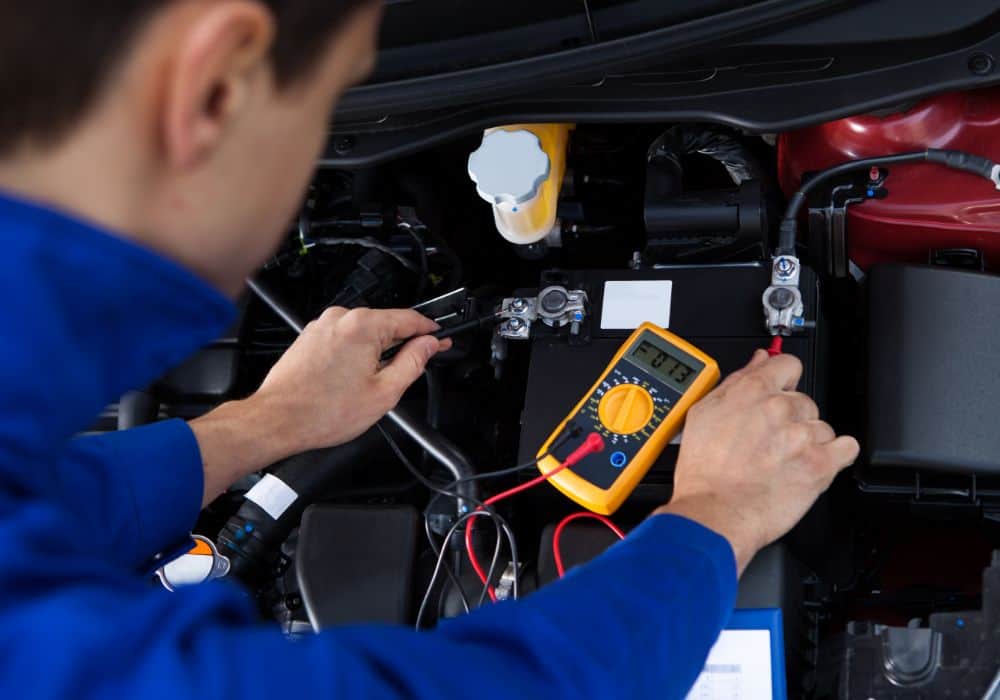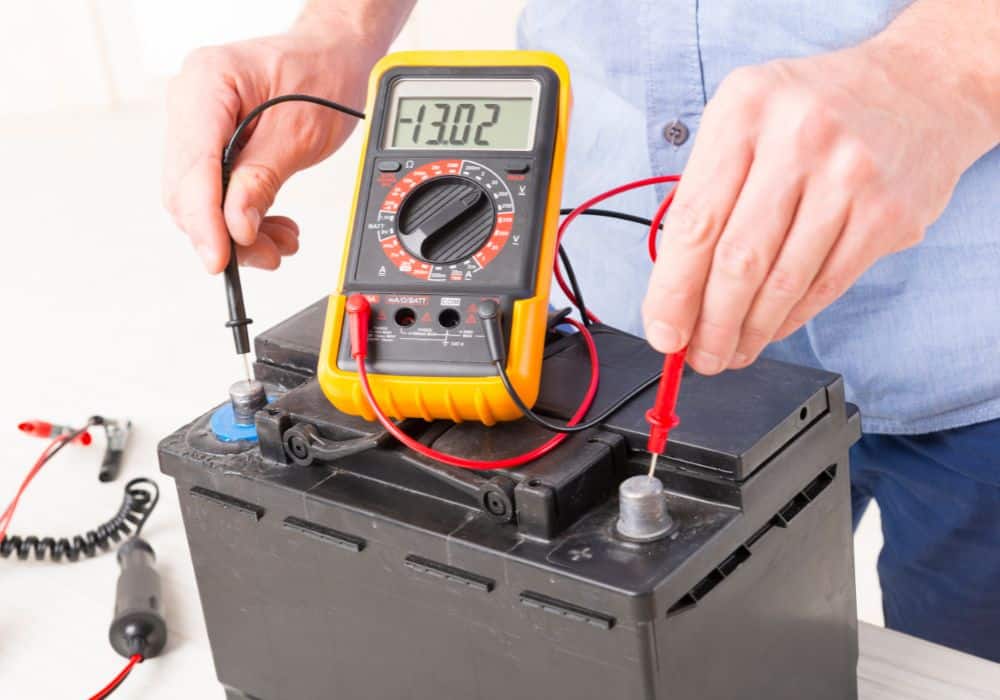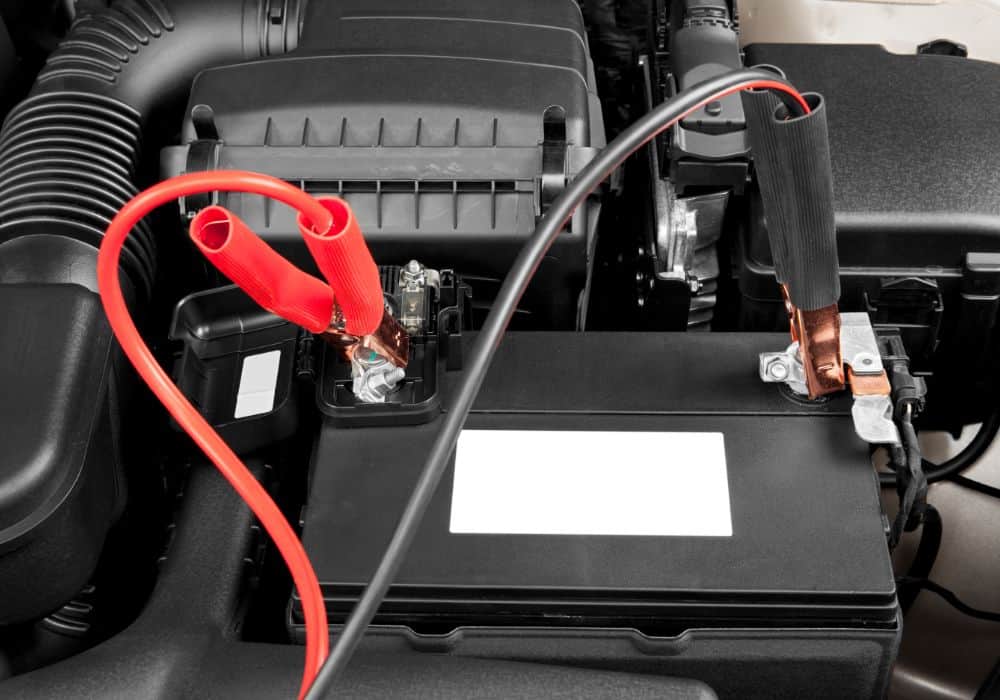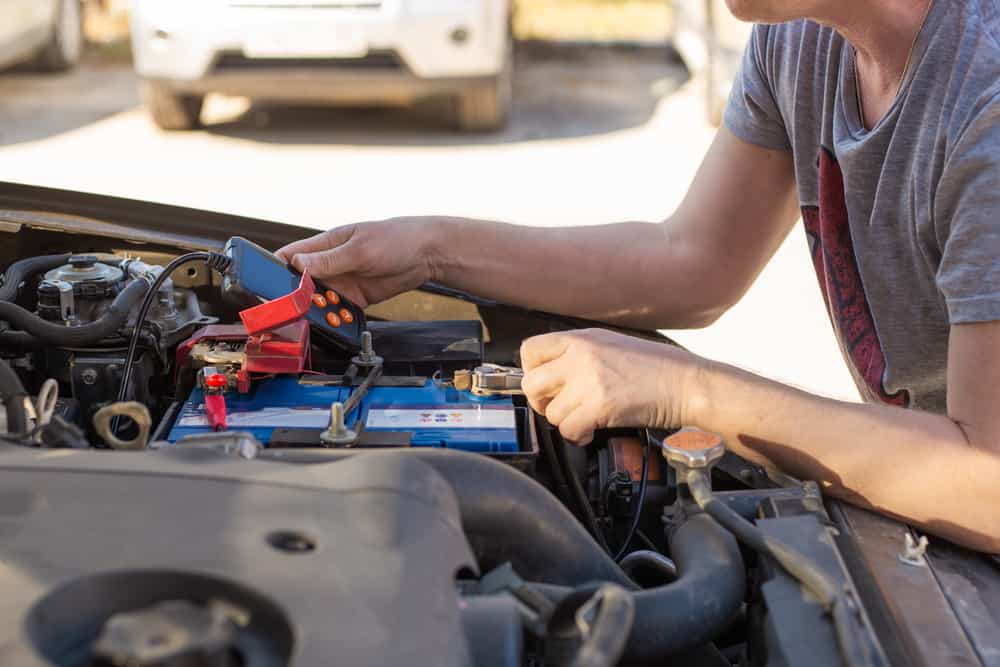While the car battery’s primary function is to run the engine, it operates other electronic systems in your vehicle. When the car is powered, the battery supplies the current that supports it. It also powers GPS, security devices, headlights, and audio equipment. As vital as your car battery is, its voltage will hinder it from supplying the required energy throughout the car.
Dealing with a dead battery is frustrating, and that’s why routine battery maintenance is important, as it keeps your battery healthy. One of the questions you might ask is, how many volts does a car battery need to start? This is one of the critical figures you must understand to ensure your car battery won’t disappoint you.
This post highlights everything you need to know about car battery voltage. Read through!
Table of Contents
How many volts does it take to start your car?
A typical battery features 12 volts, but others have 24 volts. The volts needed to start your car ranges between 10-16v. Nevertheless, the volts needed to start a car will depend on factors such as temperature. Low temperatures require more voltage to start the engine since the battery’s chemical reaction is slow in winter.
Standard volts
The standard volts needed to crank up a car is 12.6volts. This figure is between 13.7v-14.7v at the time of operation. The least volts you need to start your car is 11.8v, but you can still activate your vehicle at 10.8 volts. That said, the ideal rating when starting your car stands at 11.8 volts since it won’t put more pressure on the engine.
When the battery voltage is less than 10.8, you can’t start your car since it’s deficient. If the voltage is within 10.8-11.8v, you might have issues cranking up your machine. While you might start at this voltage range, your vehicle will be exposed to repeated stress and breakdown. It would help if you got a new battery or jump-start your car.
Furthermore, with such a voltage range, you must turn off all other electrical units and repeat the process several times. In most cases, it’s common to switch on the motor at 11.8-12.8v, but the recommended rate is 12.6.
Ideal volts after starting the car
After you start the car, the ideal voltage should be 13.2v-14.8 volts. You risk damaging your engine and battery if it’s above 14.8v. It’s important to check the car engine stabilizer to make sure your battery is in the perfect state.
You can verify these figures using your car’s internal overhead light units. When the headlights have enough brightness, you don’t have to worry since the battery has enough capacity.
In this case, measuring your car battery is important. You’ll be able to see where the battery voltages register and compare them to the ideal voltage rating. Nevertheless, even if it indicates a 12-volt battery, various kinds of batteries measure differently than others. Therefore, checking your battery rating before measuring the volts is vital. You’ll tell if the readings are correct or not.
How to measure your battery voltage

Since you know the voltage required to start your car, you might wonder how to check the battery’s voltage. When testing the battery voltage, you perform a procedure called car battery load tests.
You can test the load in various ways. Testing with a voltmeter is the standard method. This is a gadget that you plug into the connector terminals of the battery to display the possible difference of the battery.
Important things to remember when measuring voltage with a voltmeter:
- Use the device even when you think you are a battery guru
- Switch off the engine properly before connecting the voltmeter
- Make sure the alternator isn’t in a rising condition or elevated
Here are the steps involved:
- Connect the voltmeter to the car battery’s terminals
- Crank up the car engine
- Check out the device reading
- Sustain the cranking period of time for 15 seconds
During this time, the battery voltages should be above 11.8v. A voltage rating of 11.8 is good regarding the voltage required to start your car.
What if the voltmeter reading is below 11.8v?
Battery professionals always refer to these figures as an ideal rating and a sign that your car battery is in good condition. 13.7-14.7 v is the ideal rating for a healthy car battery. However, what if the voltmeter reading is below the minimum voltage required to start your car?
If the voltmeter records a rating of below 11.8, there are several causes:
- Cold weather
- Damaged battery
- Faulty alternator
- Loose connection or corrosion
Steps for testing your car battery voltage

If you want to test the voltage of your car battery, follow these steps:
Step1: Configure the monitor
A multimeter can help you get a read your battery’s voltage quickly. This device is affordable and can offer you accurate figures. Let the car sit throughout the night before testing it. It’s good to test if the vehicle has been resting and ensure the engine is running. Set your multimeter to DCV at 20.
Step2: Test the battery
Hold the multimeter’s black lead and place it on the negative terminal. Don’t touch the multimeter leads together.
Put the red lead on the battery’s positive terminal using your other free hand. After reading the measurement, follow similar steps while the engine is running and note down the voltage.
Step3: Read the measurement
Based on the type of multimeter you use, you’ll have a unique way of reading the figures. It can be displayed in the dial range, or you may have an advanced multimeter that displays the measurements on the screen.
When you turn off the engine, the voltage on the device should be 12.4-12.6v on a good battery. The measurements will increase after the car engine starts and the alternator starts charging the electrical unit.
If you get a negative readout, you connected the leads on the wrong side, and the current flows in the wrong direction.
How to test the battery without a multimeter

You can test the battery even when you can’t find a multimeter. While the outcome might not be accurate, you’ll know the battery’s condition. You’ll know if the battery will leave you stuck on the road.
- Park your car in front of the garage wall or door, where you can see the headlights well
- Switch on the headlights for at least 15 minutes with the car engine off
- Switch on the ignition to start the car
- The lights may dim briefly as the starter cranks the car engine. However, they should regain brightness after a short while
- If they become dim or the car engine struggles to run, you might have a dead or dying battery.
- If the lights fail to come back on while the engine is on, you might be having a discharge due to a damaged alternator. The car’s electrical system and lights must regain the power required while the engine is running since the alternator charging unit supplies power.
What it means when the battery has low voltage
You should assess the components to be sure that a battery replacement is the only solution. Besides low voltage, there are other warning signs for a dead battery. They include:
- Swollen battery casing: In a lead-acid car battery, electrical power is extracted from the chemical reactions in the enclosed casing. Sometimes things might go south with this chemical reaction hence the swelling. A swollen battery case is a clear indication that you need a replacement.
- Slow engine cranks or the engine fails to start: Slow engine cranks are a common sign of a damaged car battery. The primary function of a battery is to start the engine. So, a slow crank is a sign that your battery is dying.
- Dim lights: The car battery powers the headlights. Dim headlights mean that your battery isn’t supplying enough power to the lights. If you notice dim headlights, consider a battery replacement.
How to solve low-voltage issues?
There are various ways to fix low-voltage car battery issues. They include:
1. Replace the battery
A damaged battery is one of the leading causes of low voltage. In that case, you should test the voltage to determine if the battery is faulty. The quickest method to test the battery voltage is using a multimeter.
2. Have a portable jump starter as a backup
Sometimes, the battery voltage might not be enough to start the car. Get a portable jump start to act as a backup based on your car size. With a jumper, you won’t have to seek any road assistance when your battery depletes its charge. You can crank the car engine when an emergency strikes and change the battery once you finish your trip.
3. High voltage
High voltage transmits larger amounts of power over longer distances, like electricity supply to houses via high voltage power cables. The benefit of high voltage is that its efficient, and energy loss is reduced. Professionals should handle high voltage due to the higher risk of danger because of the large current in the wires.
Low voltage is easier and safe to handle as it requires less energy. A voltage less than 50v is termed low voltage.
Conclusion
How many volts does your car battery require to run an engine? Using a voltmeter is the easiest way to measure your battery voltage. Typically, the perfect voltage range is 11.8-12.8 v. After starting your car, the voltage should increase to 13.2-14.8v. Make sure you properly turn off the engine before doing the test. We have highlighted the information you need. Comment below if you have any questions about car battery voltage.
